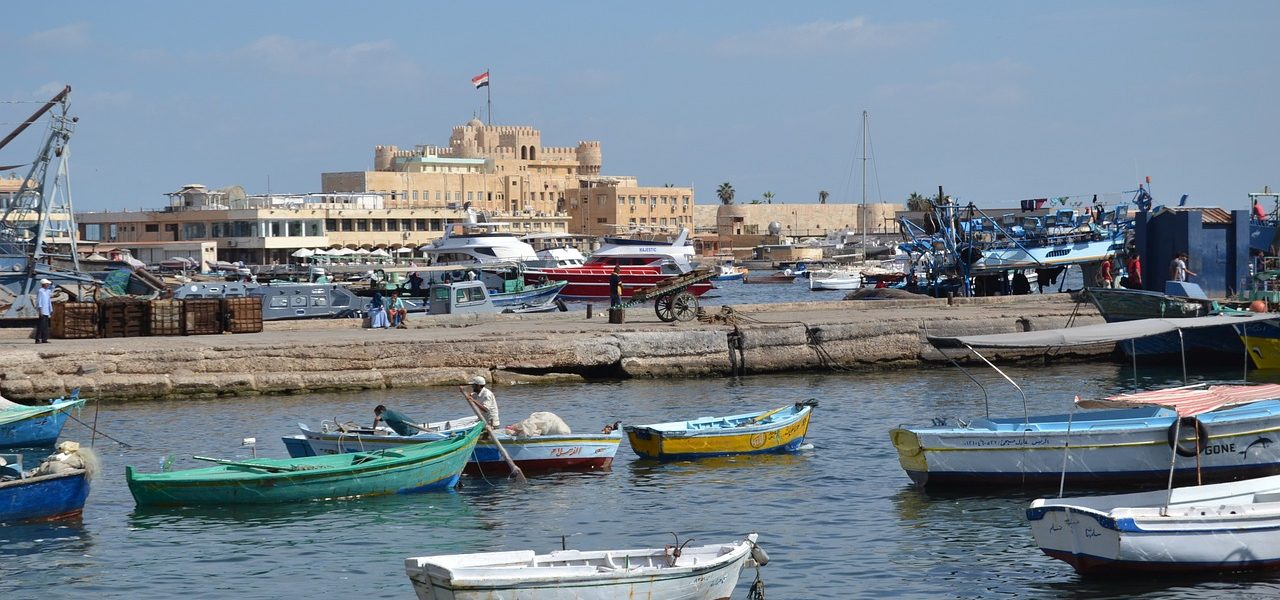Catacombs Of Kom El Shoqafa
Exploring the Mysteries of the Catacombs of Kom El Shoqafa
Nestled beneath the bustling streets of Alexandria, Egypt, lies a labyrinth of underground tunnels and chambers shrouded in mystery and intrigue—the Catacombs of Kom El Shoqafa. This ancient necropolis, dating back to the 2nd century AD, serves as a testament to Alexandria’s rich cultural heritage and offers a glimpse into the fascinating fusion of Egyptian, Greek, and Roman influences.
Historical Background
The Catacombs of Kom El Shoqafa, meaning “Mound of Shards” or “Broken Pottery Hill” in Arabic, were accidentally discovered in 1900 when a donkey fell through the ground into one of the tunnels. Excavations revealed a vast network of burial chambers, shafts, and passageways, believed to have been carved out during the Roman period.
Architectural Marvel
What sets Kom El Shoqafa apart is its unique architectural blend, reflecting the multiculturalism prevalent in ancient Alexandria. The catacombs exhibit a fusion of Egyptian, Greek, and Roman styles, showcasing intricate motifs, columns, and statues.
One of the most remarkable features of the catacombs is the main tomb chamber, known as the “Hall of Caracalla,” adorned with stunning frescoes depicting traditional Egyptian, Greek, and Roman themes. This eclectic mix of artistic influences highlights the cosmopolitan nature of Alexandria during the Roman era.
The Tombs and Burial Practices
The Catacombs of Kom El Shoqafa served as a burial site for wealthy Alexandrians, including prominent figures from various cultural backgrounds. The layout of the catacombs consists of multiple levels, with each level containing numerous burial chambers.
The burial chambers feature niches carved into the walls, where sarcophagi or stone coffins were placed to house the deceased. Interestingly, some chambers also include small alcoves for storing offerings or personal belongings of the deceased, reflecting ancient Egyptian burial customs.
The Serapeum
One of the most intriguing aspects of Kom El Shoqafa is the presence of a separate area known as the Serapeum, dedicated to the worship of the Greco-Egyptian deity Serapis. This section includes a central chamber with niches for statues of Serapis and other deities, as well as smaller rooms possibly used for rituals or ceremonies.
Symbolism and Religious Syncretism
The Catacombs of Kom El Shoqafa offer valuable insights into the religious syncretism prevalent in ancient Alexandria. The blending of Egyptian, Greek, and Roman religious beliefs and practices is evident in the architectural elements, decorative motifs, and burial rituals observed within the catacombs.
Legacy and Preservation Efforts
Despite facing natural decay and the challenges of urban development, the Catacombs of Kom El Shoqafa continue to captivate visitors from around the world. Efforts to preserve and protect this archaeological treasure are ongoing, ensuring that future generations can continue to explore and appreciate the rich history and cultural heritage preserved within its ancient walls.
The Catacombs of Kom el Shoqafa are an ancient necropolis located in Alexandria, Egypt. Dating back to the 2nd century AD, these catacombs were primarily used for burials during the Greco-Roman period. The name “Kom el Shoqafa” translates to “Mound of Shards” in Arabic, possibly referring to the broken pottery found at the site.
The catacombs are a unique blend of Egyptian, Greek, and Roman architectural styles, reflecting the multicultural nature of Alexandria during that time. They consist of a series of chambers, passages, and tombs carved into the rock beneath the ground. The catacombs were initially intended for use by a single wealthy family, but they expanded over time to accommodate more burials, eventually becoming a vast network of chambers.
One of the most remarkable features of the Catacombs of Kom el Shoqafa is the fusion of pagan and Christian elements. Some of the burial chambers contain intricate wall paintings and sculptures depicting traditional Egyptian, Greek, and Roman motifs alongside Christian symbols, indicating a transition from pagan to Christian burial practices.
Visitors to the Catacombs of Kom el Shoqafa can explore the underground passages and view the various burial chambers, sarcophagi, and decorative artworks. Despite being partially submerged by groundwater over the centuries, the catacombs remain one of Alexandria’s most significant archaeological sites and a testament to the city’s rich history and cultural heritage.
More




